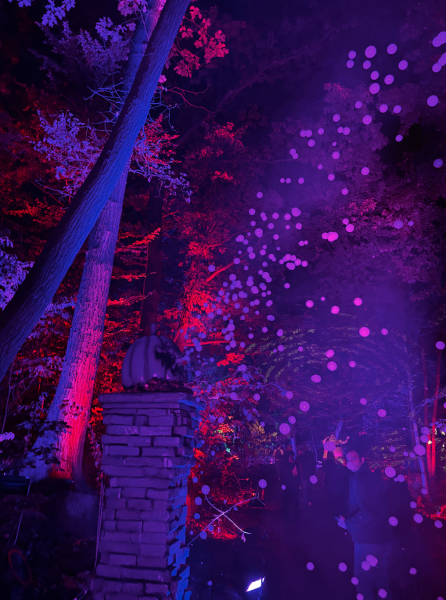The Triple Crown of Hiking: 8,000 Miles of Walking
The triple crown of hiking includes the Pacific Crest Trail, the Continental Divide Trail and the Appalachian Trail. (Courtesy of Facebook)
The triple crown of hiking includes the three most famous long trails in the U.S. In total, they make up almost 8,000 miles. Completing all three of these trails sounds like an impossible feat, but according to triple crowner Brendan Curtinrich, “anyone can thru-hike if they want to badly enough.”
This is not to say you don’t make sacrifices in the process. If you ask Curtinrich what the most challenging part of long-distance hiking is, he’ll answer with a list, “Your pack is too heavy, you’re out of shape, your body isn’t conditioned to hiking through the mountains, you’re hungry all the time, you miss sleeping in a bed, you miss cheeseburgers and you miss all kinds of wonderful benefits of civilization.” He adds, “A lot of days it really sucks.” Completing these trails is not for the faint of heart. It takes more than skills and physical fitness. It takes drive.
The triple crown of hiking is recognized by the American Long Distance Hiking Association-West, and it is awarded to those who “thru-hike” the Appalachian Trail, the Pacific Crest Trail and the Continental Divide Trail. To complete a thru-hike, one must hike an established long-distance trail end-to-end, stopping only briefly in towns along the trail to resupply. This means that the hiker must carry supplies and camp along the trail. A lot of people attempt thru-hikes, but only 482 people have completed the triple crown since 1994.
The Appalachian Trail (AT) has a reputation for being the “starter trail.” It is the shortest of the three trails, running 2,193 miles from Springer Mountain, Georgia to Katahdin, Maine, and it is older and more developed than the other two. There are footbridges across rivers, lean-tos to take shelter from the rain and you will never go more than a couple of days without seeing anyone. The elevation is lower on the AT than the other trails, and it mostly winds through lush forest and woodland. Most people start the AT in March or April to give themselves time (five to seven months) to get to Maine before it gets too cold. The thousands of people who go to the AT at that time are called “the bubble,” and they migrate up the trail together, thinning out as the months progress. Triple crowner Brendan Curtinirch explains that the AT provides a different experience than the other trails, “Because so many people do [the AT] as their first thru-hike, you get a great diversity of people doing it. People from all walks of life, people of all varying levels of fitness. You have the experienced right alongside the completely new.”
Like many others, Curtinrich started on the AT. He was inspired by his father who hiked extensive sections of the trail. Growing up, he was surrounded by pictures and stories of his father’s time on the AT. So right after he graduated college in 2013, Curtinrich set out on the hike solo. Because he needed to finish school, he didn’t start until May, but he eventually caught up to the bubble and even met his future wife along the way. He soon decided he wanted to complete the other two hikes in the triple crown as well.
The Pacific Crest Trail (PCT), partly made famous by the 2012 bestselling novel “Wild” by Cheryl Strayed, stretches from Campo, a small town on the U.S.-Mexico border, to Manning Park, British Columbia for 2,650 miles, passing through California, Oregon and Washington. The PCT is a much tougher trail to tackle than the AT. It goes through the Cascade and Sierra Nevada mountain ranges, reaching altitudes of as high as 13,000 feet. Much of the PCT is also in the desert, making water sources scarce. Thru-hikers have to strategically plan how much water they are consuming, where each water source is and how much water they are carrying; these logistics are not necessary considerations on the AT, where water flows freely.
Curtinrich thru-hiked the PCT in 2016. He set out with the intention of doing it solo but met another solo hiker towards the beginning of the thru-hike, and they ended up teaming up to complete it. As they started ascending into the High Sierra, they encountered deep snow. “It was really kind of foolish to keep going at that point, instead of waiting for the snow to melt, but we just plowed ahead into the high sierra.” Curtinrich says he was glad he had another person there to help with navigation and logistics. This sense of comradery among thru-hikers is typical on long-distance trails.
The Continental Divide Trail (CDT) is probably the least well-known of the three trails in the triple crown. It is remote, less established, has limited water sources and difficult terrain. The CDT runs along the Continental Divide of the Americas along the Rocky Mountains. It is 3,028 miles long and typically takes about six months to complete. The CDT is the most difficult of the three trails. Because it runs along the Continental Divide, the elevations are high, the terrain is more extreme and the exposure is high, meaning it is windy and there are steep drop-offs next to the trail. Curtinrich, who hiked the CDT in 2015, says, “It’s a little less glamorous than the other two.” The CDT is less frequently traveled than the other two trails, so navigation becomes an additional challenge. Curtinrich explains that in some areas, there is no established trail, just an intended corridor meaning the hiker must use a map and compass to ensure they are heading in the right direction.
Another challenge comes with supplies. On the other two trails, several towns are within walking distance, but on the CDT hikers often have to hitchhike to get to the nearest towns to resupply. Water sources are often limited, and Curtinrich recalls drinking from horse troughs and cow ponds.
Each of the trails has its own personality, terrain and experience, and those who are able to complete the triple crown are lucky enough to know all three. Curtinrich says “You can appreciate each trail for the different things that it offers.”
Hiking for months on end, sleeping on the ground and having limited food and water sounds extreme, or maybe even impossible. But Curtinrich says it’s all about desire and motivation. He thinks a couch potato who really wants to do a long-distance trail has a better chance of completing it than an extreme athlete who doesn’t really want to be there.
So why would you want to put your body and mind through that type of challenge? For some, it’s the feeling of completing a goal. For others, it’s about connecting with nature. Curtinrich says he thru-hikes because there is something really liberating about only having to worry about the body’s basic necessities. “Thru-hiking boils your life down to absolute essentials.”

Ava Erickson is a senior from Denver. Her passion for writing and language led her to double major in journalism and Spanish studies. She began working...











































































































































































































flying • Mar 11, 2024 at 9:36 pm
cool
Blister • Aug 4, 2021 at 7:53 pm
I think quite a few Triple Crowners do not apply for the ALDHA-W certification… I’ve heard it might be closer to 1000. Also, you do not need to thru-hike all the trails. Section hiking the trails over many years is just as valid as hiking them all in a single year. However, you must travel the length of each trail under your own power…ie…one step at a time…no yellow blazing!
Tradja • Apr 23, 2021 at 11:39 am
I’m surprised it’s only 482. I’m a Triple Crowner and did the ALDHA-West cert but I think a lot of triple crowners don’t self-report.